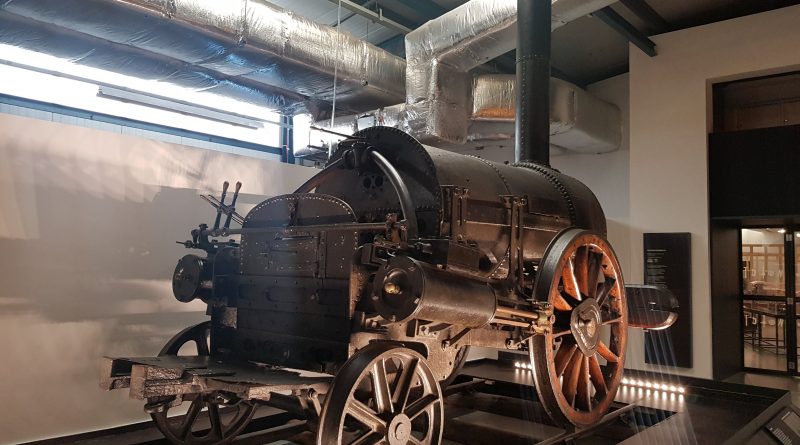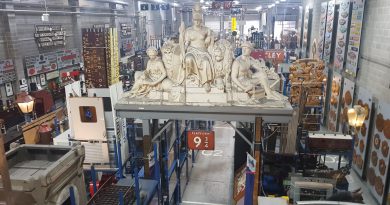York – National Railway Museum (Stephenson’s Rocket)
I’ve posted about numerous more peripheral exhibits that intrigued me in the National Railway Museum’s store, but it’s the original Stephenson’s Rocket that must be one of the museum’s most important in historic terms.
I haven’t seen this locomotive at the museum before, as it only arrived here in 2019 after it spent a period at the Science and Industry Museum in Manchester and before that, the Newcastle Discovery Museum. Prior to that, it was at the National Science Museum in London (other than for a short spell in Japan and York) and I’m sure I must have seen it there, but like most things, I’ve forgotten.
The locomotive has been well cared for most of its history, although it has also been modified and knocked about a bit since it was originally built in 1829. It was given to the Patent Office Museum in London in 1862, which later became the South Kensington Museum and much of their collection was taken over by the National Science Museum. It’s there that the locomotive remained until 2018.
It is a thing of beauty, designed by Robert Stephenson and it was the winner at the Rainhill Trials when five different locomotives were entered into a competition to be used on the Liverpool & Manchester Railway. The other four locomotives didn’t finish the 1.75 mile length of track that had been laid out, so the contract went to Robert and George Stephenson. It must have been an exciting day, the Liverpool Mercury went into some detail about the locomotives, treating the five competitors like it had been some grand horse race.
The first day of the locomotive’s use was a grand affair, attended by none other than the Prime Minister of the time, the Duke of Wellington. The first day wasn’t an entire success as the locomotive ran over, and killed, William Huskisson, the then MP for Liverpool. This gave him the unwanted honour of being the first person to be killed in a railway accident on the publicly operated rail network.
Not much is known about what happened to the locomotive during its working life, the initial excitement in the newspapers tailed off somewhat. It’s moderately surprising that the locomotive wasn’t just scrapped given that railway heritage couldn’t have been much of a thing in the 1850s. But, here it remains today, on display at the National Railway Museum until at least 2030.





